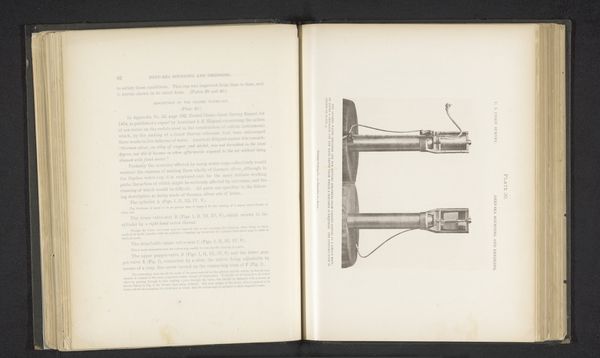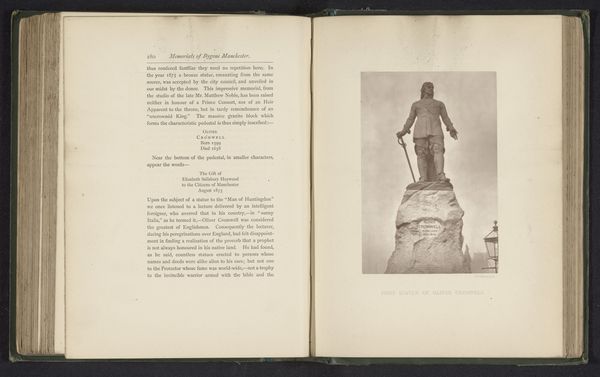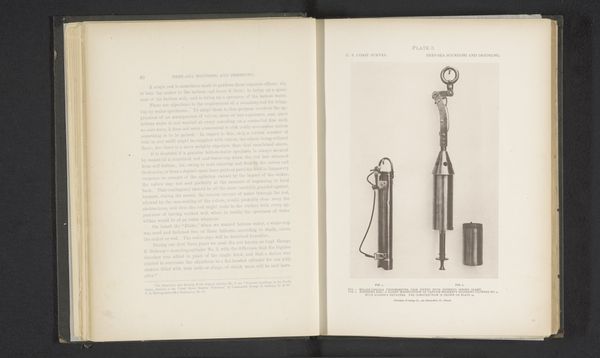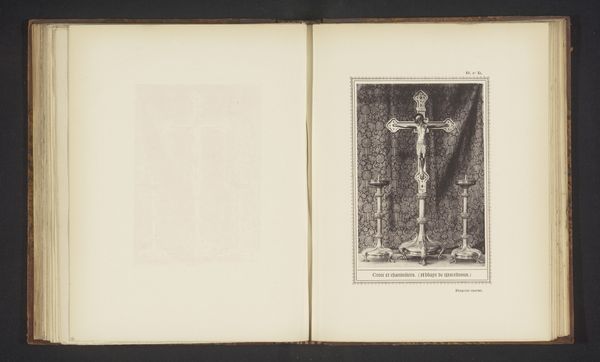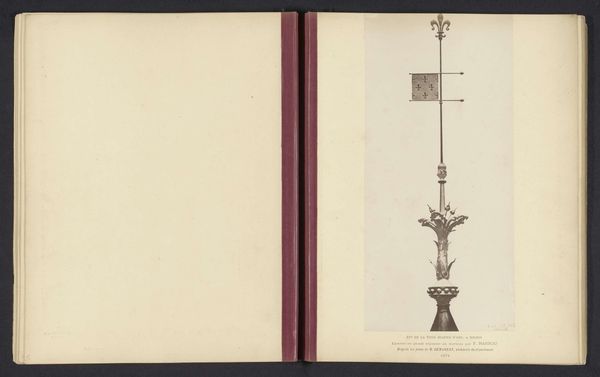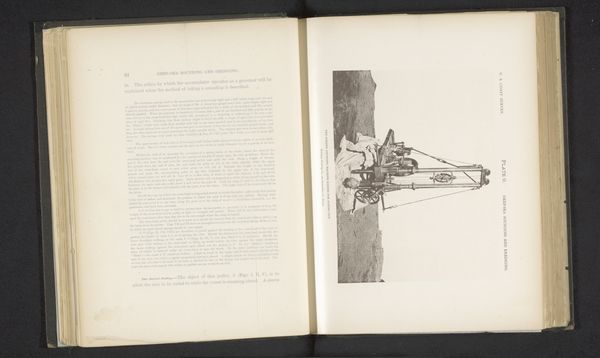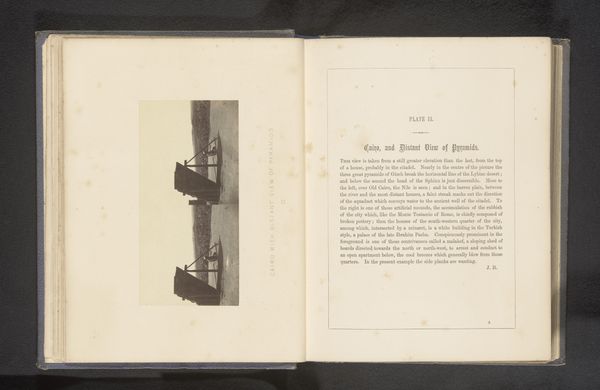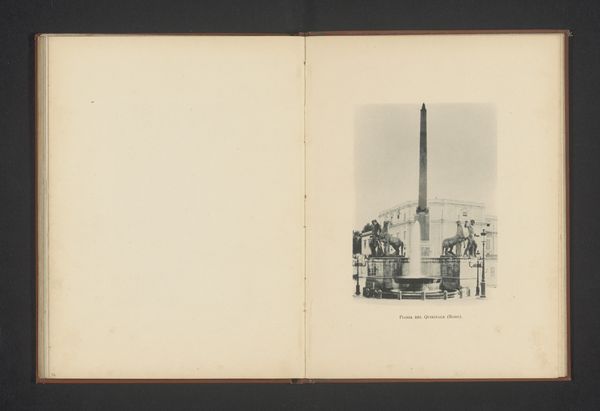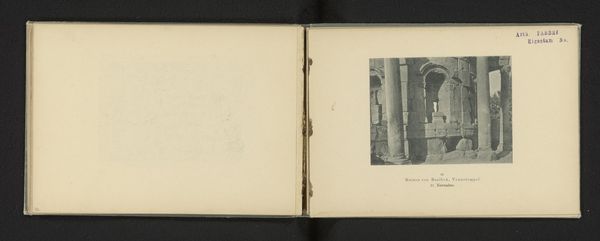
print, photography
# print
#
photography
Dimensions: height 316 mm, width 224 mm
Copyright: Rijks Museum: Open Domain
Curator: Here we have a page from what appears to be a photographic journal or catalog, showcasing a heliometer. Editor: It feels rather imposing, doesn’t it? Stark against the pale paper, and rendered in this monochrome print, it speaks of science, progress, and perhaps even a certain… authority. Curator: Absolutely. This image titled "Zonnemeter," translating to "Sun Meter", is believed to have been created before 1884 by Wilhelm Otto. It’s an example of the intersection between early photography and scientific documentation. The crisp detail suggests a commitment to objective representation. Editor: Yet, I wonder, how objective is it really? The composition, the choice to isolate this instrument—doesn't that speak to the reverence society held for science at that time? And who was it that was actually able to witness the application of these devices? Was access in any way democratized, or restricted to the upper classes? Curator: A valid point. Contextually, remember the rapid industrial advancements occurring then and how science and technology were often viewed as solutions to societal problems. The visual prominence given to the heliometer underscores this belief. There were several astronomical observatories founded and operated at that time by the bourgeoise. These were largely privately funded initiatives. Editor: This reminds me of how technological advancements often reflect and reinforce existing power structures. Was this "heliometer with unequal objectives" designed for research, or even perhaps for surveying colonized lands, legitimizing control through a lens of scientific rationale? Curator: The dual lenses, hence “unequal objectives,” allowed for incredibly precise measurements of the sun’s diameter, essential for understanding celestial mechanics. So its purpose, in some ways, reflects broader aspirations of the age to classify, categorize, and ultimately control the natural world. These developments of course have very material implications when enacted, but they are not intrinsically coercive by virtue of existing. Editor: A critical detail indeed. Thinking about it, I wonder if someone at that time had considered this a thing of beauty, or if this photography, existing as something almost diagrammatic, strips its inherent artistic value away? Curator: In contemplating such photographic records from before 1884, one gets the strong sense of an era marked by optimism regarding science, progress and its capabilities to shape society. Editor: Leaving me to contemplate the often overlooked societal dimensions behind this kind of specialized work.
Comments
No comments
Be the first to comment and join the conversation on the ultimate creative platform.
